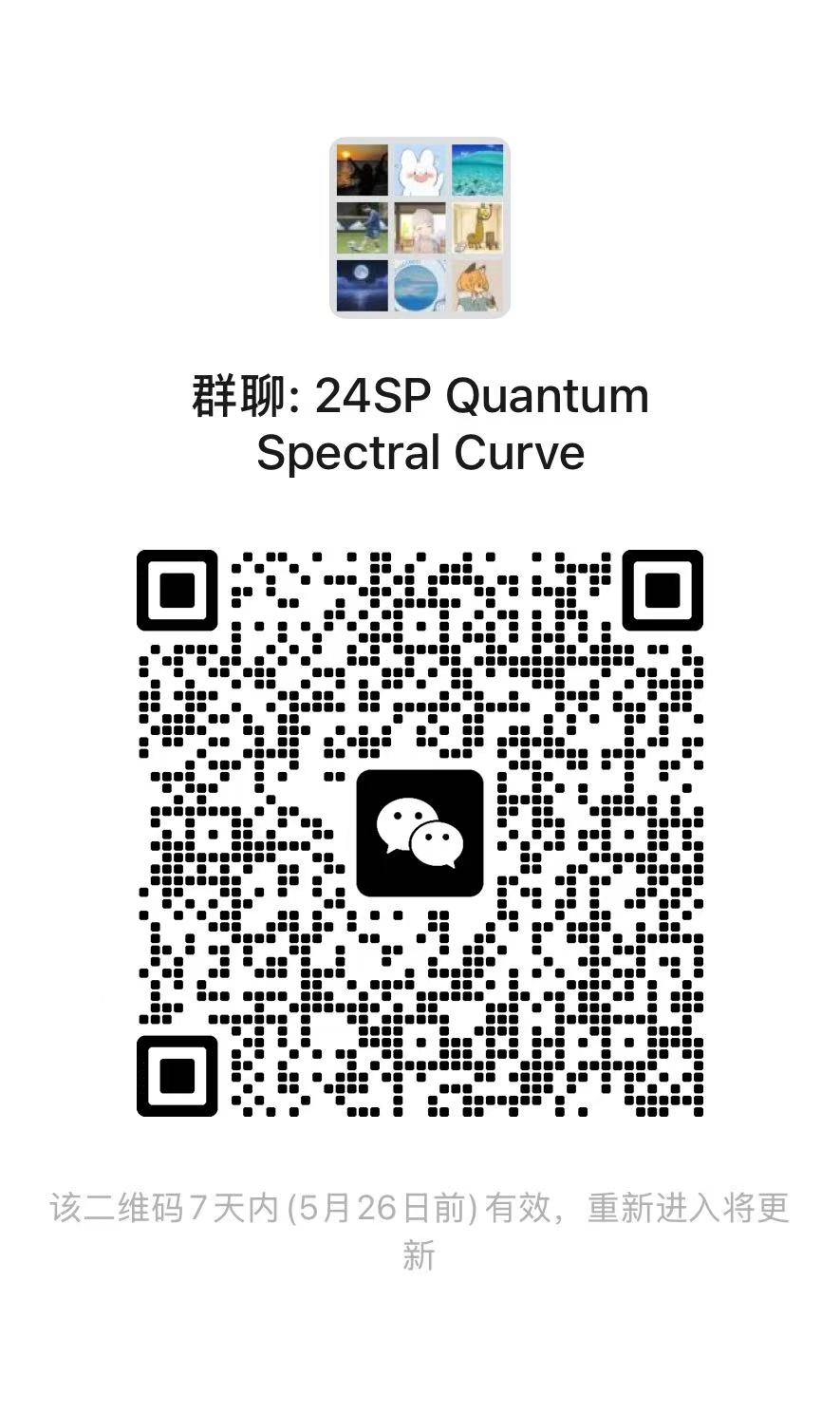AdS/CFT integrability
AdS/CFT integrability is a rather unconventional chapter in quantum integrability research. It emerged in the 2000s and has gained significant attention, as it allows one to exactly solve—or attempt to solve—various problems in the main example of holography: planar N=4 SYM and its string dual via the AdS/CFT correspondence.
What makes this integrability unusual is that standard objects like T- and Q-functions develop infinite number of branch points in the spectral parameter, so the model cannot be captured by the rational–trigonometric–elliptic triad. There is no well-defined quantum group, even not a clean Hopf algebra structure, underlying the model. Still, many powerful tools have been developed, often inspired by bootstrap-type ideas.
These lectures will focus on what has been achieved so far, with most attention on the spectral problem—reducing a challenging task in quantum field theory to a beautiful set of Riemann–Hilbert equations, coupled to the representation theory of the superconformal group, for which the new formalism of non-compact Young diagrams was developed. We will also discuss the challenges in constructing a quantum group description, and present the Hubbard model as the closest successful analogue, where Bethe equations and related structures can still be derived from first principles starting with the S-matrix.
What makes this integrability unusual is that standard objects like T- and Q-functions develop infinite number of branch points in the spectral parameter, so the model cannot be captured by the rational–trigonometric–elliptic triad. There is no well-defined quantum group, even not a clean Hopf algebra structure, underlying the model. Still, many powerful tools have been developed, often inspired by bootstrap-type ideas.
These lectures will focus on what has been achieved so far, with most attention on the spectral problem—reducing a challenging task in quantum field theory to a beautiful set of Riemann–Hilbert equations, coupled to the representation theory of the superconformal group, for which the new formalism of non-compact Young diagrams was developed. We will also discuss the challenges in constructing a quantum group description, and present the Hubbard model as the closest successful analogue, where Bethe equations and related structures can still be derived from first principles starting with the S-matrix.

Lecturer
Dmytro Volin
Date
28th May ~ 11th July, 2025
Location
| Weekday | Time | Venue | Online | ID | Password |
|---|---|---|---|---|---|
| Wednesday,Friday | 09:50 - 12:15 | A3-4-101 | ZOOM 11 | 435 529 7909 | BIMSA |
Prerequisite
Motivation and application requires acquaintance with key concepts of Quantum field theory, gauge theories and conformal field theories. Technical part requires: Analytical mechanics, Representation theory, Complex analysis, some acquaintance with quantum integrability and Bethe Ansatz.
Syllabus
1. Review of the subject. AdS/CFT correspondence in brief, main objects to compute. Integrability approach - solved and open problems.
2. Real forms of gl(n|m) super-algebras and classification of their unitary representations. Non-compact Young diagrams.
3. Spectral problem at weak coupling - solution of the spectral problem at the leading order, Yangian symmetry, Bethe Ansatz. QQ-system on non-compact Young diagrams.
4. Spectral problem at strong coupling - classical spectral curve and its quasi-classical quantisation.
5. Quantum spectral curve. Exact solution of the spectral problem at any ’t Hoof coupling. Derivations: Historical approach via Thermodynamic Bethe Ansatz and model approach via Monodromy bootstrap.
6. Hubbard model as a toy model for AdS/CFT. Monodromy bootstrap vs a derivation from the first principles.
7. Beyond AdS5/CFT4: AdS4/CFT3 and AdS3/CFT2 - quantum spectral curves and corresponding global symmetry algebras.
8. Beyond spectral problem. Review of the recent progress.
2. Real forms of gl(n|m) super-algebras and classification of their unitary representations. Non-compact Young diagrams.
3. Spectral problem at weak coupling - solution of the spectral problem at the leading order, Yangian symmetry, Bethe Ansatz. QQ-system on non-compact Young diagrams.
4. Spectral problem at strong coupling - classical spectral curve and its quasi-classical quantisation.
5. Quantum spectral curve. Exact solution of the spectral problem at any ’t Hoof coupling. Derivations: Historical approach via Thermodynamic Bethe Ansatz and model approach via Monodromy bootstrap.
6. Hubbard model as a toy model for AdS/CFT. Monodromy bootstrap vs a derivation from the first principles.
7. Beyond AdS5/CFT4: AdS4/CFT3 and AdS3/CFT2 - quantum spectral curves and corresponding global symmetry algebras.
8. Beyond spectral problem. Review of the recent progress.
Reference
*Beisert et al: “Review of AdS/CFT Integrability: An Overview”
*Lecture notes; papers by the lecturer, in particular 1712.01811, 1812.09238, 2109.06164
*Lecture notes; papers by the lecturer, in particular 1712.01811, 1812.09238, 2109.06164
Audience
Graduate
, Postdoc
, Researcher
Video Public
Yes
Notes Public
Yes
Language
English
Lecturer Intro
Dmytro Volin received PhD degree in theoretical physics in 2009 at Universite Paris XI for his thesis done at C.E.A. Saclay. During 2013-2018, he worked at the institute of mathematics at Trinity College Dublin, and since 2018 he is an associate professor at Uppsala University, affiliated with the department of physics and astronomy; theoretical physics and with the department of mathematics; centre for geomtry and physics. He works on various topics of quantum integrability and mathematical physics, and is known in particular for formulation of quantum spectral curve that solves the AdS/CFT spectral problem.





